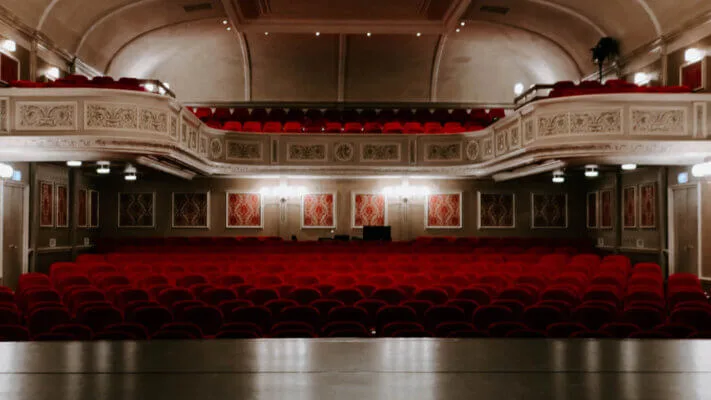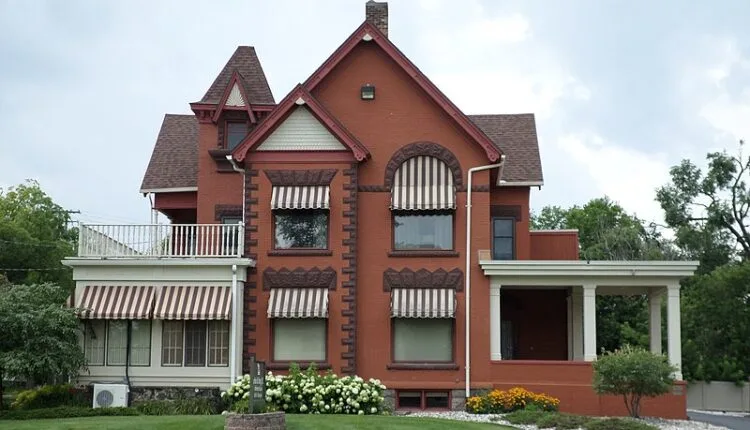
Photo courtesy of Grand Valley State University via Facebook
High-fives, cute dance moves, and the athletic prowess that comes from lugging a huge head around all day. These are just a few things we love about Michigan’s college mascots.
The word “mascot” comes from the French term “mascotte,” which translates to “lucky charm.” And here in Michigan, we definitely see these popular faces of collegiate sports as lucky.
Mascots emerged in the late 19th century and early 20th century as real animals incorporated into the sports game for additional entertainment. Most of these animals were predator animals. But eventually, the idea of the mascot shifted to include humans. When Jim Henson created the Muppets in the 1960s, these stylistic changes to puppetry also translated to mascots. The muppet-like mascots proved to be incredibly successful for public relations and marketing, thus leading to the three-dimensional mascot costumes we know and love today.
But how have Michigan’s favorite college mascots evolved over time? We’ve rounded up the mascots from some of Michigan’s most popular and well-known colleges and found some of their incredible histories.
Sparty

College: Michigan State University
Team Name: Spartans
Campus Location: East Lansing
Michigan State University’s Sparty the Spartan is arguably Michigan’s most recognizable college mascot. But the muscular Greek guy was not always the face of Michigan State.
Michigan State’s mascot history began over a century ago, when the college was a much smaller agricultural college. The team name was the “Aggies” back then. In 1926, when the college expanded beyond agriculture, the team name shifted to the “Michigan Staters” after the name won in a poll. However, the name didn’t translate very well to newspaper headlines (nor did “the Michigan State Michigan Staters” roll off the tongue).
Lansing State Journal sports editor George Alderton refused to write the Staters name and is partially responsible for the use of Spartans. Alderton was friends with a family of Greek immigrants, the Scofes, who ran a Lansing restaurant called The Coffee Cup. Stephen Scofes had been born near Sparta, Greece, and suggested the name of Spartans. Alderton loved the name and wrote a flattering comparison of the East Lansing team to the Spartans’ athletic prowess. The name circulated to other news outlets until it eventually stuck.
Sparty as a mascot dates back to members of the fraternity Theta Xi in 1955. Three fraternity members fashioned a papier-mâché Spartan head that was six feet tall and weighed over 60 pounds. The massive Spartan head rallied school spirit during a pep rally before a football game with Notre Dame. In the following years, Sparty lost 30 pounds when a new fiberglass version of his head was built for a Rose Bowl game. The fiberglass head continued to appear at sporting events for the next several years.
In 1989, Sparty got a facelift. The Alumni Association’s graphic designer at the time sketched Sparty’s current design—a muscular man in full body armor. Sparty made his official debut on Sept. 16, 1989. The Michigan State Alumni Office then began overseeing the Sparty Mascot Program.
Today, the program preserves a longstanding tradition of having students portray the legendary Spartan, keeping the students’ identities confidential until graduation. The students who portray Sparty are infamously allowed to walk across the commencement stage wearing Sparty’s shiny green boots, finally revealing their beloved alter ego to often-thunderous applause.
Michigan State maintains a dedicated record of the Sparty Alumni.
Biff
College: University of Michigan
Team Name: Wolverines
Campus Location: Ann Arbor
The University of Michigan is a national anomaly among Big Ten universities; it doesn’t really have a mascot. Although the recognizable M logo easily elicits a response of “Go Blue!” anywhere in the Mitten State, the University of Michigan eschews having an actual mascot and seems quite happy with the decision. But it was not always this way.
At one point in the school’s history, the University of Michigan Wolverines had an official mascot that went by the name of Biff. Biff’s story starts with the man behind the infamous Big House known as Michigan Stadium, Fielding Yost. Working as the school’s football coach at the time, Yost persuaded the University of Michigan regents to build a new stadium that would have the potential to host large capacities of fans for years to come. Michigan Stadium opened in 1927. That same year, Yost also ensured live mascots would be on the football field.
University of Michigan students have been calling themselves Wolverines as far back as 1861, even though no one is quite sure who decided on the name. Yost theorized that the origin came from wolverine pelt trading at Sault Ste. Marie. In the 1920s, Yost was competing with a rival team, the Wisconsin Badgers, who amazed their audiences with a live badger on the field. Yost, seeking to one-up the Badgers, brought two caged wolverines to the game, named Bennie and Biff. Biff seemed to take the spotlight as a would-be mascot for University of Michigan. The two live wolverines were on loan from the Detroit Zoo, and after the football season, Bennie returned to the Detroit Zoo while Biff went to the now-defunct University of Michigan Zoo.
After only one year, the live mascots were discontinued due to the normal troubles that come with such live mascots: they became larger, more ferocious, and more dangerous to their handlers.
The University of Michigan had several other attempts at mascots. In the late 1960s and mid-1970s, fox terriers became mascots of sorts on the football field, pushing a ball around the field during half-time. The first one was Whiskey, then Brandy took over when Whiskey became too old.
Another attempt came in the late 1980s, when three out-of-state students attempted to create Willy the Wolverine. One student was Eric Lefkofsky, who would go on to found Groupon. The student group used market research and trademarked the name in the interest of making money and eventually having Willy become official. Many students loved Willy the Wolverine, but University of Michigan officials were not interested in the mascot. Though students advocated for Willy the Wolverine by naming the 1990 student directory after him and having him serve as the grand marshal of the 1989 homecoming parade, the University of Michigan was firmly against the mascot. Willy’s three student creators were sued in 1992 and Willy the Wolverine fell victim to a cease-and-desist letter.
The push for an official University of Michigan mascot has been fairly quiet since Willy the Wolverine. In 2011, athletic director Dave Brandon was interested in a mascot revival for University of Michigan, citing the opportunities for engagement with fans. But this interest fizzled out, ending when Brandon resigned in 2014.
As recently as the winter 2022 semester, flyers depicting Biff as the University of Michigan mascot could be found around campus, indicating that perhaps some students want to see Biff return in some capacity.
W the Warrior

College: Wayne State University
Team Name: Warriors
Campus Location: Detroit
Though Wayne State University is Michigan’s third-largest university, its football team is in NCAA Division II, a different league than the top-tier Division I, where you’ll find Michigan State University and University of Michigan. Perhaps for this reason, Wayne State’s mascot W isn’t quite as well-known, but he still has an intriguing history.
Wayne State University’s team name was originally the Tartars, chosen via student poll back in 1927. The term Tartar refers to the idea of fear-invoking people living east of Europe during the time of the Mongolian Empire in the 13th century. Though the name has some historical overlaps with other terms, the name Tartar was derived from the Greek/Latin term “Tartarus” meaning the underworld, or basically, hell. When Wayne State University chose this name for their team, there might have been confusion with the Tartar people resulting from a belief that Tartar was synonymous with Mongol. The truth clearly was more complex and carried a controversial meaning, as many depictions of Wayne State’s Tartar mascot derived from racist stereotypes of Chinese, East Asian, and Middle Eastern people.
In 1999, at a time when many schools were re-evaluating stereotypical mascots based on race, the problematic Tartar mascot and team got a rebranding. The team name of Warriors was chosen to be close enough to the Tartar heritage and retain the Wayne State loyalists from that era, but also bring a new image to the team name, which was considered “dated.”
W the Warrior has certainly made headway in the battle to be more current. The mascot can be seen leading official viral parody videos for the university like the “Harlem Shake” (as Harlem Shake Wayne State Style) and “What Does The Fox Say?” (as What Does The W Say?). More recently, W the Warrior has also become integrated as a chatbot using artificial intelligence to help connect undergraduate students with important text messages.
Although W the Warrior is an ambiguous mascot—no one is quite sure if he’s an animal, human, monster, or something in between—he is beloved by many Wayne State University students and makes for a unique experience on game days.
Blizzard T. Husky

College: Michigan Technological University
Team Name: Huskies
Campus Location: Houghton
With Michigan Technological University being located in Michigan’s northern reaches of the Keweenaw Peninsula, the snow-loving husky makes perfect sense for a mascot. In fact, the current mascot, Blizzard T. Husky, is actually a gender-neutral mascot that’s supposedly 350 years old (in dog years). But they were not always the mascot.
Michigan Tech’s earliest sporting history involves a vague history of huskies on the sports field, but the first mascots portrayed by humans were a little different. Husband-and-wife team Bill and Kathy Wassberg used an upcycled locker costume and a modified clown costume to portray the first mascot team, Bear and Mouse. Very little survives of this period of Michigan Tech history—Bear’s costume stunk so badly it had to be thrown out, and the Mouse costume unfortunately met its demise at the teeth of real mice in the Wassberg attic.
The Bear and Mouse mascots were portrayed by other students into the 1980s, with Bear being phased out in the latter half of the ’80s. Students chanted things such as “Where’s the Bear?” and “The Mouse is in the house!” as Wolf began to replace Bear. In 1997, a contest was held to give Wolf an official name. Blizzard won over other names such as Heikki, Howie, Harley, and Yoopie.
Blizzard T. Husky has been up to all kinds of canine mischief and fun since taking over as mascot. Their most infamous caper includes getting onto the VIP list at the space shuttle Discovery’s final launch at NASA in November 2010. It’s unknown which Michigan Tech student was portraying Blizzard that day, but Blizzard had plenty of fun sitting in a gravity-launch simulator, visiting the Astronaut Hall of Fame, and romping around Florida’s beaches.
But Blizzard is most beloved for their humanitarian efforts, whether it’s visiting a fan in the hospital or just giving hugs to everyone on the team, win or lose.
Fun fact: the “T” stands for “The.”
Louie the Laker
College: Grand Valley State University
Team Name: Lakers
Campus Location: Allendale
Grand Valley State University is one of Michigan’s younger universities, having been established in 1960. But this Grand Rapids-area university has only grown in popularity. And its mascot, Louie the Laker, loves Michigan’s waters as much as the rest of us.
Grand Valley State University’s team name started as the Bruisers, a name chosen from its team colors of black and blue. But in 1965, GVSU students decided to hold contest submissions for a new team name. The student body settled on the Lakers, a write-in suggestion in the contest, which remains the team name today. Briefly, in 1975, a task force recommended changing the team name to Sawyers, citing difficulty creating a logo for Lakers and the competition with colleges like Lake Superior State College. Despite its historical significance, the Sawyers name didn’t stick, and the Lakers were here to stay.
The GVSU mascot started out as the Great Laker, a creation of the university marketing department. Unlike most mascots, the Great Laker originally involved an actor in costume, not a mascot head. A large foam head was only added in 1986.
When athletic director Tim Selgo arrived in 1996, he had a burst of inspiration for a new mascot. He was traveling to Saginaw for a softball tournament just a few months after starting at GVSU. He and his assistant director wanted an alliterative name. Larry the Laker was the first name suggested, which the assistant director shut down. Then Selgo suggested Louie the Laker, which was more favorable.
The appearance of Louie the Laker was based loosely on a crew member of the legendary sunken American Great Lakes freighter in Lake Superior, the S.S. Edmund Fitzgerald. Louie was designed to resemble Louis VanTressel, an oiler who lost his life when the Edmund Fitzgerald sank in 1975.
Louie the Laker’s original appearance involved a giant foam head that was around 3 or 4 feet tall. He also wore a football jersey, but this attire resulted in heckling from the crowd at University of California, Davis. To increase his likability on the national stage, his image was revamped into looking as he does in present-day, with a striped shirt and captain’s hat.
According to short videos played at football games, Louie sleeps on the 50 yard line and always dreams of football.
Grizz
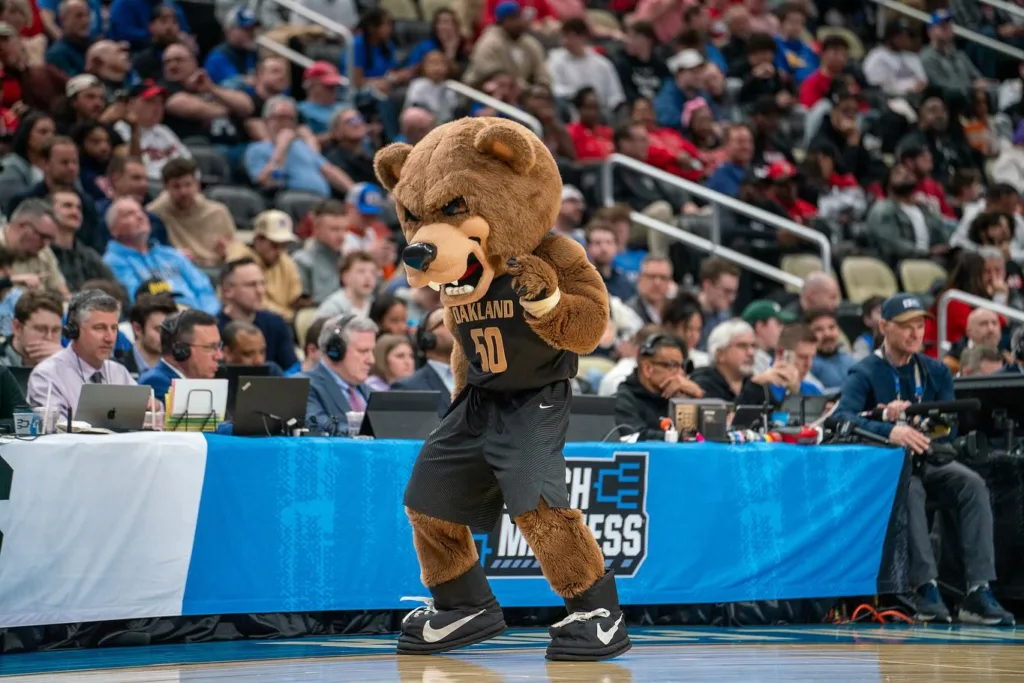
Photo Courtesy of Oakland University via Facebook
College: Oakland University
Team Name: Golden Grizzlies
Campus Location: Rochester Hills
Oakland University is one of the better-known universities in the metro Detroit area and its mascot, Grizz, is quite recognizable. But this mascot has a history that bears repeating.
Oakland University started as a satellite campus of Michigan State University in 1959. Matilda Dodge Wilson, the widow of a co-founder of the Dodge motor vehicle company, donated the land of present-day OU for Michigan State University’s usage. A few years later, in 1964, a group of cross-country runners and swimmers decided on the name of “Pioneers,” since they saw Oakland University as a pioneering school of sorts.
Student Charles “Chick” Conklin created Pioneer Pete in 1979. He joined the cheerleading team and dressed up as Oakland’s first mascot with a leather jacket, moccasins, and a fur hat. Pioneer Pete stuck as Oakland University’s mascot until the ’90s, when men’s basketball head coach, Greg Kample, was pushing for a new mascot.
In 1998, Oakland University left NCAA Division II and entered the Division I ranking. They decided they needed a fiercer mascot to match, so they created a Mascot Advisory Committee. The committee wanted an animal-based mascot with regional ties that was gender- and race-neutral. Pioneer Pete didn’t quite cut it, but the original mascot did.
Thus, Grizz was born. Originally, Grizz was a bright yellow, often described as a “big yellow gummy bear.” From his debut in 1998 until 2007, Grizz kept the gummy bear look, but in 2007 his image was updated to the fuzzy brown look he has today. He even got his own “Scrappy Doo” in the form of Clawzz, a somewhat smaller bear mascot, in 2009. Grizz also has an 8-foot-tall bronze statue forged in his likeness and featured on campus near the O’rena.
Grizz features in promotional videos for the university, such as a tour of the OU campus and even a yearly Groundhog Day promotional video for OU’s Day of Giving.
Swoop

College: Eastern Michigan University
Team Name: Eagles
Campus Location: Ypsilanti
Since the 1960s, the use of Native American and First Nations names and images in sports teams has been the subject of public discussion and controversy. In Michigan, one of the most noteworthy revisions to a Native American-derived name is seen at Eastern Michigan University.
Eastern Michigan University decided on the team name of Hurons in 1929. Before that, the EMU teams had gone by the uninspiring name the Normalites. The Hurons name was decided in a contest, inspired by both the Huron tribe and a local venue at the time called the Huron Hotel.
The name stuck until 1988, when the Michigan Department of Civil Rights issued a report advising schools with Native American names, logos, and mascots to drop such imagery. At the time, three other colleges, 62 high schools, and 33 middle schools in Michigan used such imagery. In 1991, the EMU Board of Regents voted to drop the Hurons name and replace it with the Eagles. EMU was one of the first schools in the country to do this in response to controversy surrounding stereotypes. However, EMU’s marching band kept the controversial logo until 2015.
The shift from Hurons to Eagles was contentious and remains so for some alumni. EMU began the TRUEMU Campaign in 2011 to help unite all alumni, regardless if they graduated as a Huron or an Eagle.
The current mascot was adopted in 1994. He is an American bald eagle that goes by the name Swoop. His name is most notably featured on the campus food pantry, called Swoop’s. He also features prominently in social media for the university, including the YouTube and TikTok channels.
READ MORE: From Escanaba to 8 Mile: Here are 16 works filmed or set in Michigan
Want more Michigan history and news you can use? Sign up for our newsletter!
Politics

Trump says he would allow red states to track pregnancies, prosecute abortion ban violators
In an interview published by Time magazine this week, former president Donald Trump detailed his plans for a potential second term and said he would...

Whitmer: Reproductive rights still ‘in jeopardy’ in Michigan
Michigan Gov. Gretchen Whitmer is urging Michiganders to re-elect President Joe Biden in November—or else risk losing access to reproductive...

How to apply for a job in the American Climate Corps
The Biden administration announced its plans to expand its New Deal-style American Climate Corps (ACC) green jobs training program last week. ...
Local News
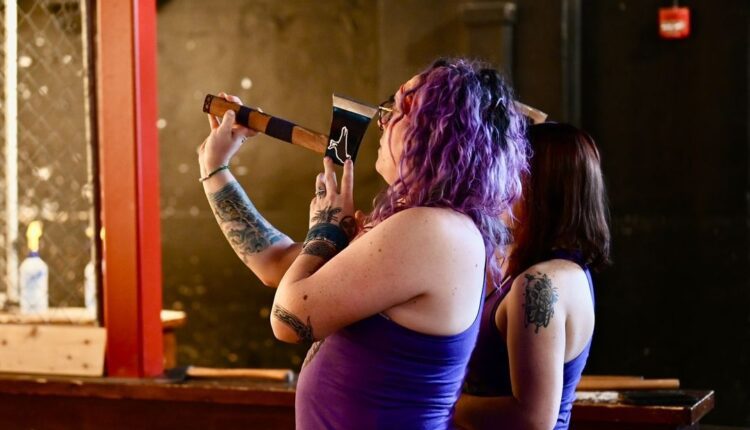
Detroit date night done right: 12 fresh and exciting ideas
Whether you want to make a good first impression with your latest Bumble match or surprise your spouse with an exciting evening out, Detroit is full...
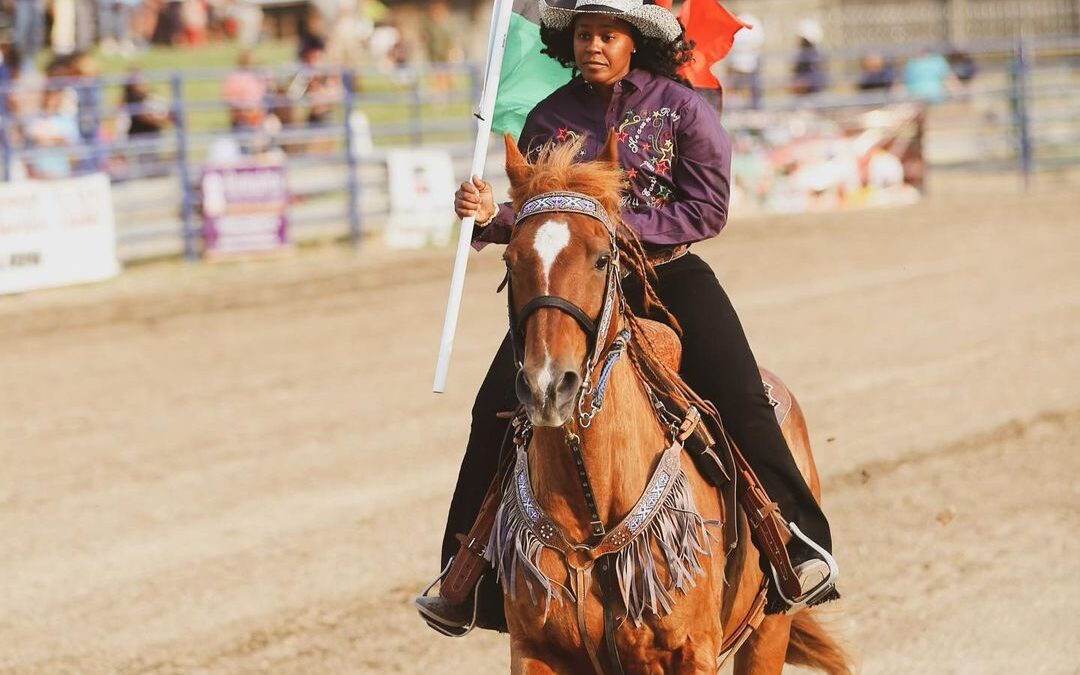
Black cowboy culture will be on full display at upcoming Flint rodeo
Flint, Michigan, is set to host an exciting and culturally significant event this June: the Midwest Invitational Rodeo. This eagerly anticipated...





